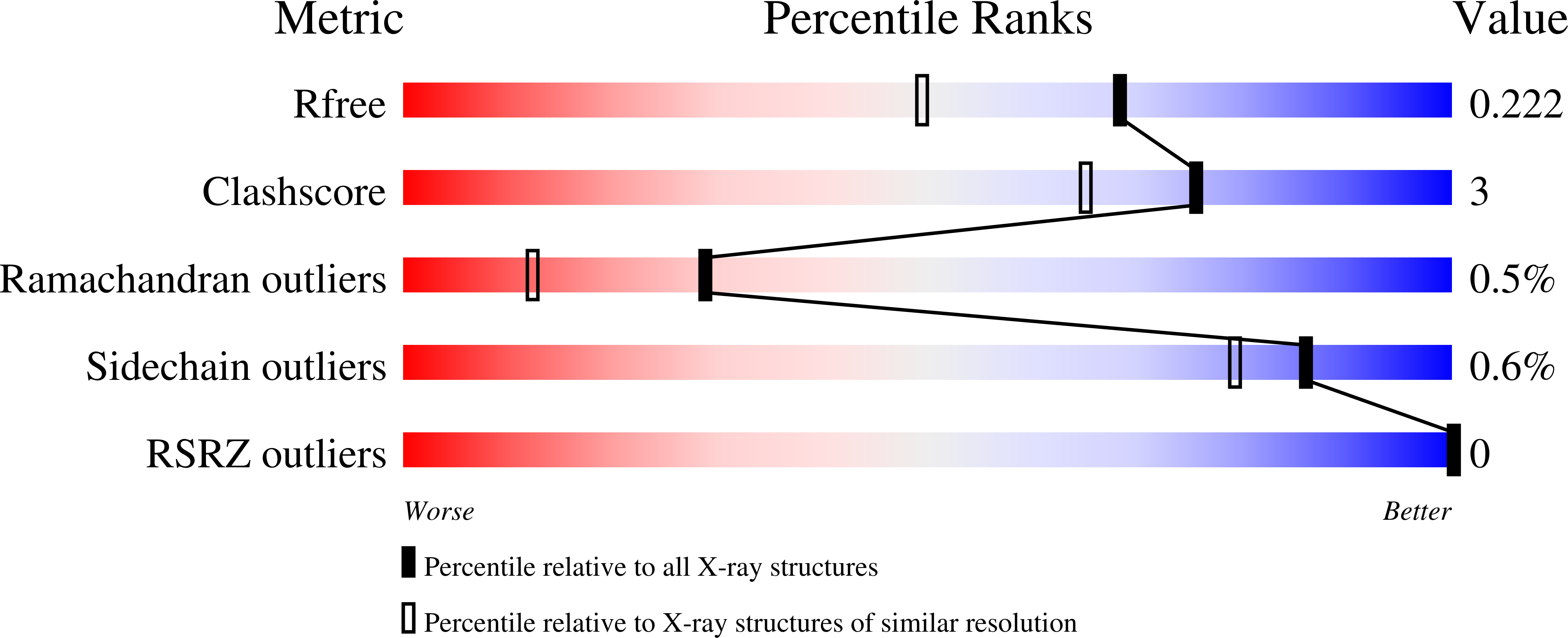Ligand Conformational Bias Drives Enantioselective Modification of a Surface-Exposed Lysine on Hsp90.
Cuesta, A., Wan, X., Burlingame, A.L., Taunton, J.(2020) J Am Chem Soc 142: 3392-3400
- PubMed: 32009391
- DOI: https://doi.org/10.1021/jacs.9b09684
- Primary Citation of Related Structures:
6U98, 6U99, 6U9A, 6U9B - PubMed Abstract:
Targeted covalent modification of surface-exposed lysines is challenging due to their low intrinsic reactivity and high prevalence throughout the proteome. Strategies for optimizing the rate of covalent bond formation by a reversibly bound inhibitor ( k inact ) typically involve increasing the reactivity of the electrophile, which increases the risk of off-target modification. Here, we employ an alternative approach for increasing k inact of a lysine-targeted covalent Hsp90 inhibitor, independent of the reversible binding affinity ( K i ) or the intrinsic electrophilicity. Starting with a noncovalent ligand, we appended a chiral, conformationally constrained linker, which orients an arylsulfonyl fluoride to react rapidly and enantioselectively with Lys58 on the surface of Hsp90. Biochemical experiments and high-resolution crystal structures of covalent and noncovalent ligand/Hsp90 complexes provide mechanistic insights into the role of ligand conformation in the observed enantioselectivity. Finally, we demonstrate selective covalent targeting of cellular Hsp90, which results in a prolonged heat shock response despite concomitant degradation of the covalent ligand/Hsp90 complex. Our work highlights the potential of engineering ligand conformational constraints to dramatically accelerate covalent modification of a distal, poorly nucleophilic lysine on the surface of a protein target.
Organizational Affiliation:
Department of Cellular and Molecular Pharmacology , University of California , San Francisco , California 94158 , United States.















